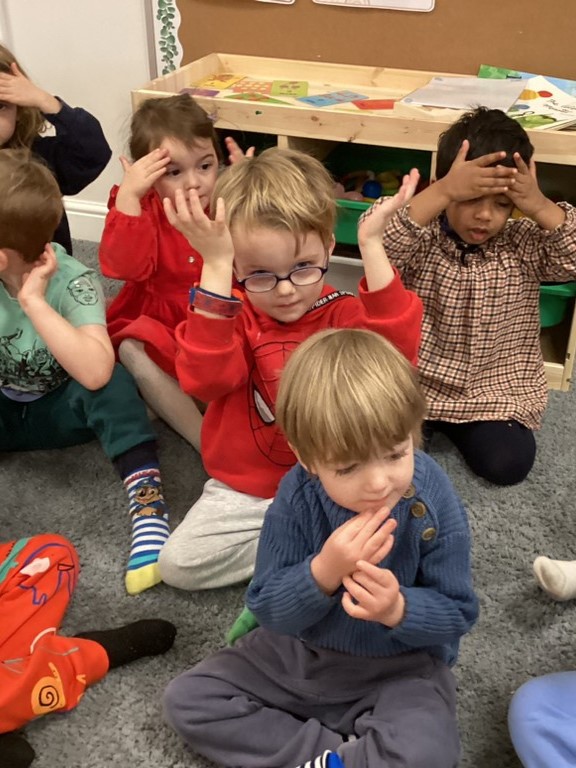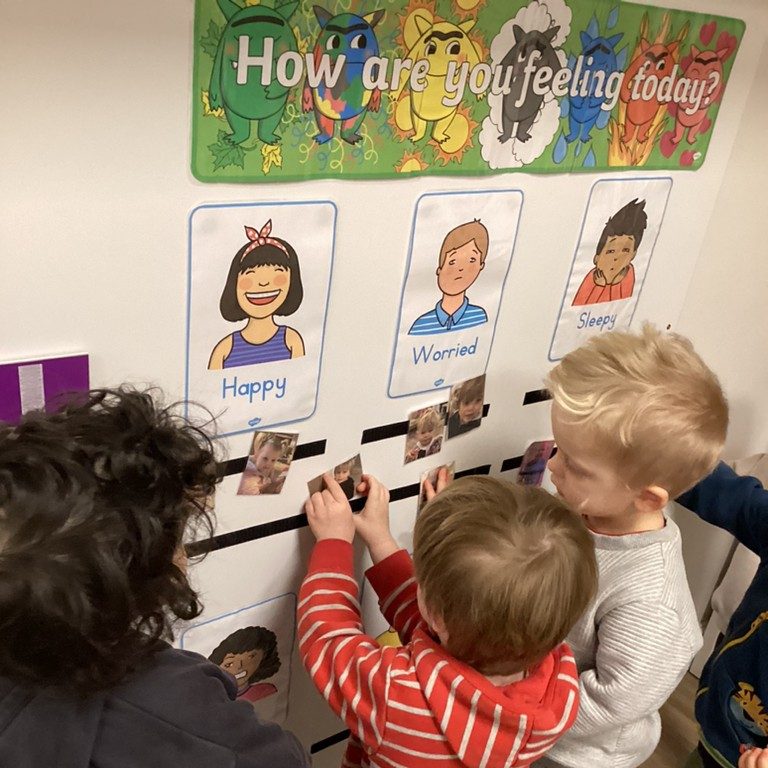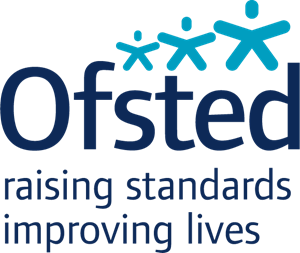Watch any preschooler for any length of time and you’ll be witness to a whirlwind of emotions. Whether they are practicing sharing toys, learning to be a gracious winner (or loser), or building up their resilience to try again when something fails, when you’re a little person your emotions can often feel oh so terribly big!
Learning to manage BIG feelings is all part of how children develop a skill called ‘emotional intelligence’. In fact, in the early years, building a child’s emotional intelligence is considered just as important a skill as learning to read or write. Emotional intelligence helps children to identify and navigate their feelings. It helps them self-regulate when things go wrong, it creates positive social connections AND it sets them up for future academic success.
Emotions can be quite a tricky concept for kids to grasp. Luckily, we’ve got some tried and tested ways that we make learning about feelings such fantastic fun!
There’s no better way for kids to learn than when they’re ‘in the moment’. When you can see big emotions bubbling to the surface the best thing to do is to encourage your child to explain how they are feeling. Whether we’re using visual emoji charts or helping them find the right words, getting to grips with super-sized emotions is the best way we know how to tackle them.
At the POD we like to give names to all kinds of feelings. Whether we are feeling sparkly and happy or more like a sad raincloud, we whip out all our best describing words and store them in our (ever expanding) emotional toolbox. When we see little ones grappling with a feeling like frustration, disappointment or even anger, we can use our emotion words to navigate these feelings and help them deal with them in a positive way. Whether we’re identifying feelings by asking open-ended questions such as “How do you feel having to wait for your turn?”, acknowledging feelings “I can see you’re sad that we’ve got to stop painting – it’s okay to feel this way” or helping them expand their emotional awareness “How do you think your friend felt when you shared your toy with them?” we are actively embracing emotions of every kind.

Using sign language to identify and calm emotions.
Giving kids the chance to get things off their chest really helps to diffuse any bubbling emotional energy. At POD expressing our emotions is something we ALL do daily. Not just the kiddos. When children see their trusted adults explaining how they feel, it sets the stage for our children to follow suit. It lets them know that it’s okay to feel emotions but most importantly it ‘models’ the right way to deal with them. Parents can also do this at home. If you’re trying to do something and feeling a bit frustrated – acknowledging this by saying out loud “I’m feeling frustrated so I’m going to leave this for a moment and take a few breaths” is a simple yet effective tool that paves the way for your child to do the same! We all know how hard it can be managing our own emotions as an adult so you can imagine how tricky it is for a 4 year old!
At the POD we make sure we are super tuned-in to our children’s feelings by actively listening (and acknowledging) all shapes and sizes of emotions daily. Creating an emotionally rich environment means we also have sensory spaces for children who prefer to deal with their emotions quietly. Sometimes children don’t want to talk right away (and that’s okay) but need a place to process how they’re feeling. We have calming zones at POD that are filled with sensory items like textured toys for kids to use when they are trying to relax and regulate. Why not create a little quiet space at home too? Using soft pillows, books and toys, you can turn a little corner of a room into the perfect place for conversations and cuddles!

POD's How are you feeling? wall.
At the POD, building emotional intelligence is a major part of our curriculum. We look to find the most engaging, exciting and relatable ways to expose our children to a rich and varied emotionally driven education. Reading books together is one of our favourite ways to explore emotions. We often find that kids are brilliantly astute at understanding the plight of the central character or using visual cues to work out how they might be feeling as the plot evolves.
There are SO many amazing books that explore emotions but one of our favourite’s is The Colour Monster by Anna Llenas for its wonderful illustrations and vivid descriptions of emotions using colours. Playful activities can also be incredibly effective too. We like to incorporate games like emotional charades, where children act out various emotions whilst others guess which it is or create activities such as emotion sorting cards where children match emotions to expressions. From the books we read to the games we play we are always looking for imaginative ways to weave in some lovely emotional stuff into everything we do.

Using emojis and colours to talk about our emotions.
At the POD it’s our mission to create a learning environment where children feel free to express themselves - whatever they’re feeling. We know that, just like any other skill, developing emotional intelligence takes time, patience and of course a bit of practise. Helping kids find their feet (& their feelings) not only helps them navigate the world with confidence and empathy, but it makes them much happier too! And that’s one feeling we can’t help but be proud of.
Emotions can be quite a tricky concept for kids to grasp. Luckily, we’ve got some tried and tested ways that we make learning about feelings such fantastic fun!
Identify, Acknowledge and Explore Their Feelings
There’s no better way for kids to learn than when they’re ‘in the moment’. When you can see big emotions bubbling to the surface the best thing to do is to encourage your child to explain how they are feeling. Whether we’re using visual emoji charts or helping them find the right words, getting to grips with super-sized emotions is the best way we know how to tackle them.
At the POD we like to give names to all kinds of feelings. Whether we are feeling sparkly and happy or more like a sad raincloud, we whip out all our best describing words and store them in our (ever expanding) emotional toolbox. When we see little ones grappling with a feeling like frustration, disappointment or even anger, we can use our emotion words to navigate these feelings and help them deal with them in a positive way. Whether we’re identifying feelings by asking open-ended questions such as “How do you feel having to wait for your turn?”, acknowledging feelings “I can see you’re sad that we’ve got to stop painting – it’s okay to feel this way” or helping them expand their emotional awareness “How do you think your friend felt when you shared your toy with them?” we are actively embracing emotions of every kind.

Using sign language to identify and calm emotions.
Lead by Example, Listen and Give them Space!
Giving kids the chance to get things off their chest really helps to diffuse any bubbling emotional energy. At POD expressing our emotions is something we ALL do daily. Not just the kiddos. When children see their trusted adults explaining how they feel, it sets the stage for our children to follow suit. It lets them know that it’s okay to feel emotions but most importantly it ‘models’ the right way to deal with them. Parents can also do this at home. If you’re trying to do something and feeling a bit frustrated – acknowledging this by saying out loud “I’m feeling frustrated so I’m going to leave this for a moment and take a few breaths” is a simple yet effective tool that paves the way for your child to do the same! We all know how hard it can be managing our own emotions as an adult so you can imagine how tricky it is for a 4 year old!
At the POD we make sure we are super tuned-in to our children’s feelings by actively listening (and acknowledging) all shapes and sizes of emotions daily. Creating an emotionally rich environment means we also have sensory spaces for children who prefer to deal with their emotions quietly. Sometimes children don’t want to talk right away (and that’s okay) but need a place to process how they’re feeling. We have calming zones at POD that are filled with sensory items like textured toys for kids to use when they are trying to relax and regulate. Why not create a little quiet space at home too? Using soft pillows, books and toys, you can turn a little corner of a room into the perfect place for conversations and cuddles!

POD's How are you feeling? wall.
Always Add Games and Activities into the Mix!
At the POD, building emotional intelligence is a major part of our curriculum. We look to find the most engaging, exciting and relatable ways to expose our children to a rich and varied emotionally driven education. Reading books together is one of our favourite ways to explore emotions. We often find that kids are brilliantly astute at understanding the plight of the central character or using visual cues to work out how they might be feeling as the plot evolves.
There are SO many amazing books that explore emotions but one of our favourite’s is The Colour Monster by Anna Llenas for its wonderful illustrations and vivid descriptions of emotions using colours. Playful activities can also be incredibly effective too. We like to incorporate games like emotional charades, where children act out various emotions whilst others guess which it is or create activities such as emotion sorting cards where children match emotions to expressions. From the books we read to the games we play we are always looking for imaginative ways to weave in some lovely emotional stuff into everything we do.

Using emojis and colours to talk about our emotions.
At the POD it’s our mission to create a learning environment where children feel free to express themselves - whatever they’re feeling. We know that, just like any other skill, developing emotional intelligence takes time, patience and of course a bit of practise. Helping kids find their feet (& their feelings) not only helps them navigate the world with confidence and empathy, but it makes them much happier too! And that’s one feeling we can’t help but be proud of.



